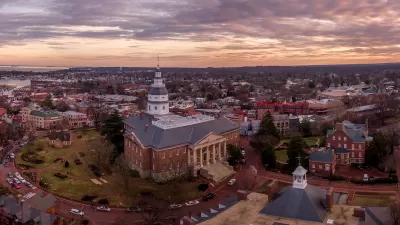The impacts of a tax break designed to create jobs, stimulate development, and reduce blight are proving hard to track.

Writing in Next City, Meir Rinde assesses the effectiveness of Philadelphia’s Keystone Opportunity Zones, a state tax break designed to stimulate development. “In short, KOZs eliminate almost all state and local taxes for the owners of the designated parcels and businesses in the zones,” the article explains.
“Supporters say it’s an essential tool for clearing blight, reinvigorating dormant land that might otherwise be too expensive to redevelop, and inducing employers to come to or remain in Pennsylvania rather than being enticed to other states with their own generous incentive programs.” But because there is no system to keep track of how many jobs the program creates or how much tax revenue it forgoes, it’s difficult to tell how effective the program has been at achieving its stated goals.
“Initially just an effort to revive 12 properties across the commonwealth, the program has morphed into a huge program covering more than 2,000 parcels, including some that were already being developed or are in economically booming neighborhoods.” The lack of obligations attached to the program means many sites—around 70 percent, according to a state legislative committee report—remain completely or partially undeveloped while their owners receive the tax abatement. A 2019 report found that “From 2008 and 2017 Philadelphia had foregone between $40 million and $125 million each year in two types of business taxes, the BIRT and NPT, or $645 million total in 2019 dollars.”
The same report “recommended approving KOZs only where new development would not occur anyway; providing prospective tenants with clearer estimates of the benefits of locating in a KOZ; changing laws to allow cities to offered tailored payment in lieu of taxes (PILOT) plans to KOZ businesses; and limiting use of the program by companies that produce few jobs.”
FULL STORY: Keystone Opportunity Zones Power Many Of Philly’s Top Development Projects. Are They Worth It?

Alabama: Trump Terminates Settlements for Black Communities Harmed By Raw Sewage
Trump deemed the landmark civil rights agreement “illegal DEI and environmental justice policy.”

Planetizen Federal Action Tracker
A weekly monitor of how Trump’s orders and actions are impacting planners and planning in America.

The 120 Year Old Tiny Home Villages That Sheltered San Francisco’s Earthquake Refugees
More than a century ago, San Francisco mobilized to house thousands of residents displaced by the 1906 earthquake. Could their strategy offer a model for the present?

Ken Jennings Launches Transit Web Series
The Jeopardy champ wants you to ride public transit.

BLM To Rescind Public Lands Rule
The change will downgrade conservation, once again putting federal land at risk for mining and other extractive uses.

Indy Neighborhood Group Builds Temporary Multi-Use Path
Community members, aided in part by funding from the city, repurposed a vehicle lane to create a protected bike and pedestrian path for the summer season.
Urban Design for Planners 1: Software Tools
This six-course series explores essential urban design concepts using open source software and equips planners with the tools they need to participate fully in the urban design process.
Planning for Universal Design
Learn the tools for implementing Universal Design in planning regulations.
Clanton & Associates, Inc.
Jessamine County Fiscal Court
Institute for Housing and Urban Development Studies (IHS)
City of Grandview
Harvard GSD Executive Education
Toledo-Lucas County Plan Commissions
Salt Lake City
NYU Wagner Graduate School of Public Service




























